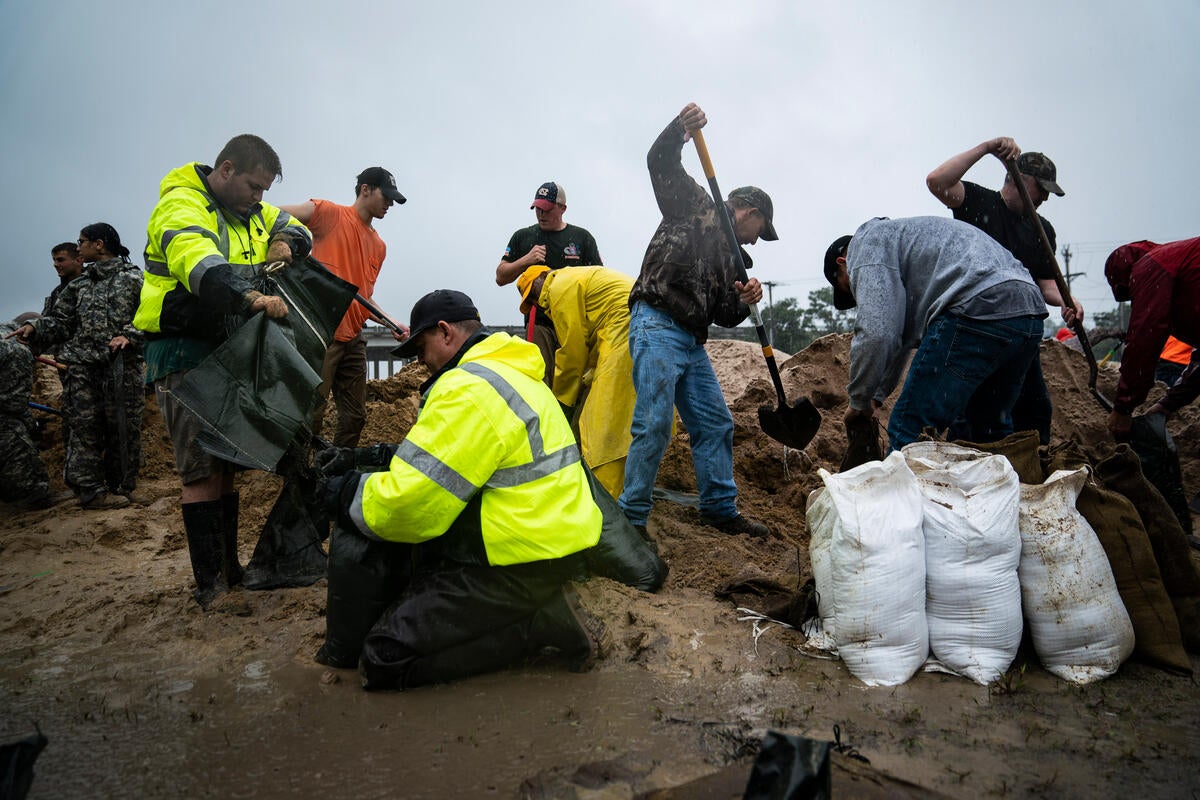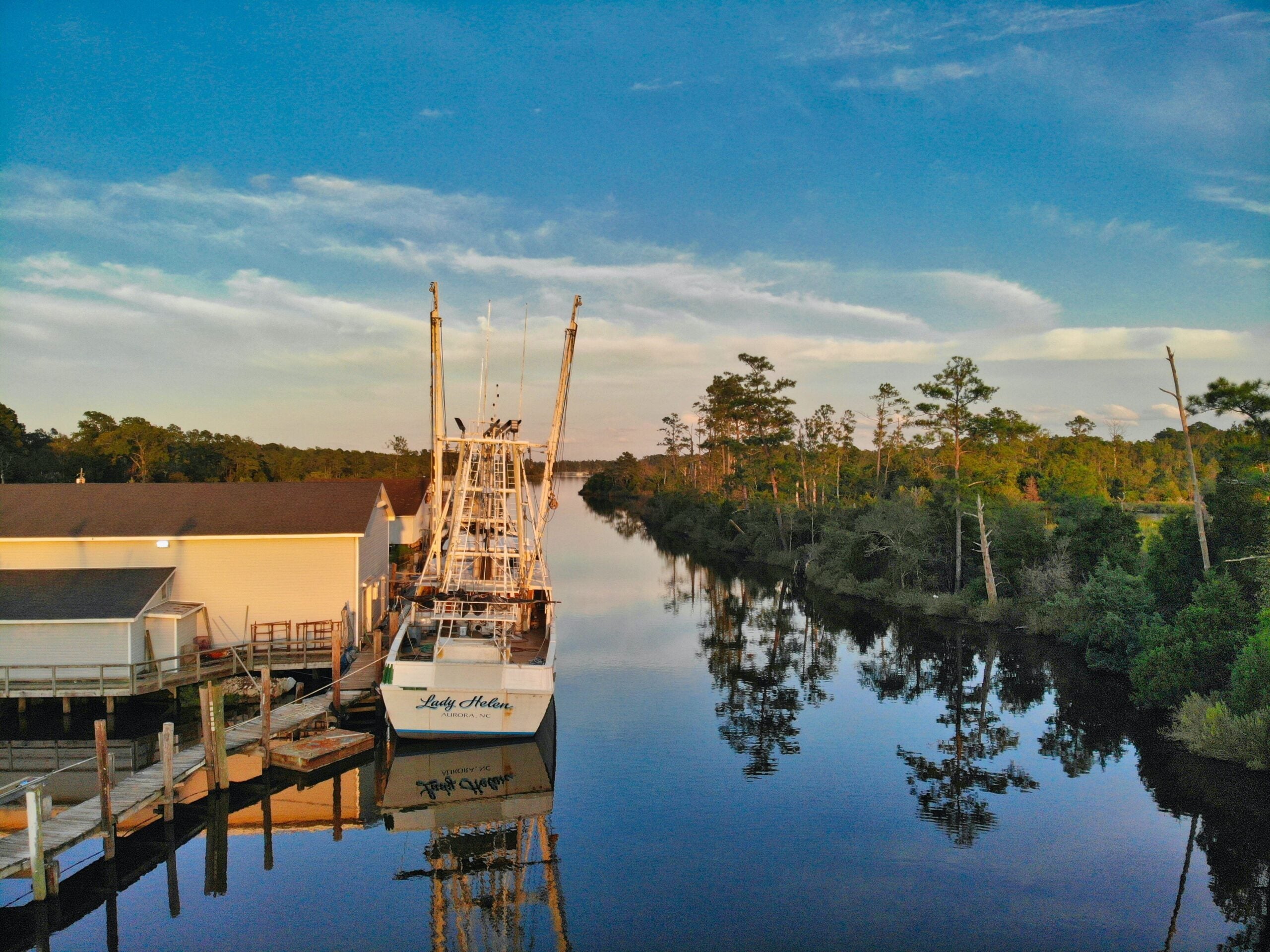In 2018, Hurricane Florence made landfall near Wilmington, North Carolina, taking 42 lives and costing more than $16 billion in estimated damage. Now, five years later, many residents and communities are still reeling from the storm’s floodwaters. Blue tarps remain on unpatched roofs, businesses have not returned and communities have experienced disproportionate recoveries.
The immediate and residual impacts from Hurricanes Florence and Matthew, Tropical Storm Fred and other subsequent unnamed flooding events have had long-lasting impacts on communities. As a result, these events have encouraged state leaders to take action to better prepare for future storms.
Environmental Defense Fund thanks leaders, as well as businesses, conservation groups and community members, for working to build a more flood-resilient North Carolina. Let’s look at how far we’ve come in the last five years.

LUMBERTON, NC – SEPTEMBER 14 : 40 members of the National Guard and 100 volunteers fill sand bags and build a wall across train tracks where flood waters flowed into Lumberton in hurricanes past behind West Lumberton Baptist Church on Friday, Sept 14, 2018 in Lumberton, NC. North Carolina State Senator Danny Earl Britt, Jr. organized the action through facebook in defiance of CSX Transportation but with permission of the Governor to try and prevent major flooding in the area. (Photo by Jabin Botsford/The Washington Post via Getty Images)
Leaders are developing the Flood Resiliency Blueprint
Working in collaboration with state agencies, local governments and NGOs, Senator Jim Perry and Representative John Bell led the authorization of the state’s first Flood Resiliency Blueprint.
The blueprint will be used as a support tool to guide state-wide decisions around resilience and is informed by advanced hydrologic and hydraulic modeling, which demonstrates how much water is flowing and where that water goes during a flood. Ultimately, this information will help guide investment of local, state and federal resilience funding toward cost-effective solutions to reduce flood vulnerability.
The Flood Resiliency Blueprint will also provide accurate and timely information on flood risks and effective solutions for communities and landowners. This will help guide local efforts to manage and abate flooding within watersheds and river basins and help communities manage risks beyond traditional jurisdictional boundaries. In addition, it helps ensure funding is locally supported and regionally effective.
Lawmakers are expanding funding to improve natural infrastructure and streams
After Hurricane Florence, North Carolina’s state legislature appropriated more than $300 million toward flood mitigation efforts. Included was support to advance natural infrastructure projects and stream improvement efforts through programs at the state’s Department of Agriculture, Department of Cultural and Natural Resources (DCNR) and Department of Environmental Quality (DEQ).
The Stoney Creek effort is one example where DEQ’s Division of Mitigation Services has engaged private-sector environmental restoration firms to work with landowners and the town of Goldsboro. They have developed a watershed-scale approach to regional flooding using natural infrastructure projects, such as enhancing and restoring wetlands to store storm water and incorporating natural berms or in-ditch structures to slow the flow of storm water.
Part of the $300 million also went to the DCNR’s Land and Water Fund to advance 17 proposals to implement natural infrastructure projects and to support the planning and construction of additional flood mitigation projects.
Experts are advancing research
State legislators and agency leaders have also advanced new studies through the UNC Collaboratory and state agencies to research the benefits of flood mitigation solutions and develop new datasets to inform the Flood Resiliency Blueprint and community solutions.
For example, Dr. Barabara Doll from North Carolina State University led a 15-person research team to explore natural infrastructure solutions in the Neuse River Basin. The study found potential flood reductions of up to 45% in areas of high natural infrastructure adoption. While Dr. Miyuki Hino from the University of North Carolina collaborated with colleagues and graduate students to examine floodplain management. Through her research, she found that for every building removed from the state’s floodplains, 10 new structures were built, raising concerns that floodplain buyouts are not keeping pace with new development.
Looking toward the road ahead
Overall, these initiatives have been instrumental in helping North Carolina better prepare for the ongoing and growing threat of flooding and storm risk. We thank North Carolina leaders and collaborators for their recent efforts and on-going commitment to address flooding.
But even with this advancement, experts agree that many flood challenges still lie ahead. For instance, due to EPA v. Sackett ruling, millions of acres of North Carolina wetlands are now unprotected, leaving communities at risk of losing valuable, flood-reducing ecosystems. This Supreme Court decision shifts responsibility for the conservation and management of certain wetlands from federal agencies to the states. Whether and how North Carolina policymakers address the potential loss of wetlands, in addition to how much development occurs in the state’s floodplains, will significantly impact the story that is told after future storms.
We call on leaders to prioritize state-level coordination and increase local capacity to identify and implement watershed scale solutions, recognizing that flood solutions can’t be developed within traditional jurisdictional or landowner boundaries. We also encourage leaders to ensure protection of wetlands and other natural flood defenses to enable communities, landowners and all North Carolinians to better prepare for and quickly recover from the next flood or storm.










